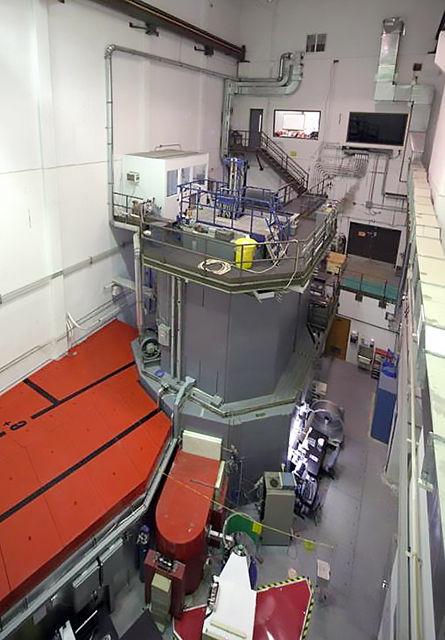Although Burlington Labs is home to NC State’s very own nuclear reactor, students will be glad to know that no radiation is emitted from the building.
NC State, before its most recent reactor, has had three. The first three have long been decommissioned but the fourth, better known as PULSTAR, lives out its days from within Burlington Labs.
The state of North Carolina, service activities and research grants fund the maintenance and operation of the reactor. Since 1972, the reactor has had three main goals that are comprised within its mission statement: explaining the reactor’s dedication to research, teaching and extension.
According to Scott Lassell, the manager of the Nuclear Services Center at NC State, scientists from the Manhattan Project, the research and development project that produced the first nuclear weapons during World War II, helped establish the first academic nuclear program here at NC State.
At the core of PULSTAR, there are radiation levels that are considered lethal. This radiation, however, is not dangerous because of how the reactor is constructed. There is no access to the area of lethal radiation because it sits at the bottom of a 20-foot tank that is filled with water. The water acts as a shield so that the radiation cannot cause any danger or harm to health. This allows students and employees to work around the reactor and for students to be able to walk around campus safely. Essentially, the water biologically shields the dangerous radiation.
Since PULSTAR is not a power reactor, it should not be associated with the potential dangers and harmful effects of power reactors. Power reactor cores are much bigger and get hotter, and their fuel is more radioactive. The water in power plants cools the fuel. Because it cannot get hot enough, PULSTAR is a safe reactor, so there are no problems that can result from the structure. The water is needed in order to operate the reactor because it allows the neutrons to slow down in the core. The slowed atoms cause fission, meaning the atoms split. The water slows the neutrons down until they are at the same kinetic energy as the water.
There are many uses of PULSTAR’s radiation. One of the main purposes of the reactor is to enable and facilitate research and experiments throughout several disciplines. NC State’s Nuclear Engineering website lists PULSTAR’s main applications as the reactor making it easier to interpret different diffraction patterns, understanding the properties of materials and investigating cosmology theories used in physics.
“Another purpose of the reactor is to provide service,” Lassell said. “The reactor has even completed work for NASA and the EPA to look for trace element concentrations in materials.”
Lea Durand, a junior studying English, said she recognizes the benefits of having the reactor on campus.
“I think it is important for students to have the opportunity to do nuclear research, and NC State offers students that opportunity at Burlington Labs,” Durand said. “It’s great that the rumors about the reactor are being dispelled.”
Carl Smith, a senior studying nuclear engineering, explained that the reactor is a “hands-on training tool.”
“It serves as a hands-on training so that students can see the phenomena that are actually taught. We can see large-scale events that happen on the atomic scale, such as Doppler broadening and negative reactivity due to voids. Additionally, we also learn regulatory protocol and the reactor program provides a unique hands-off opportunity to students to become licensed.”
Tours are available to academic groups or prospective facility users in and out of NC State’s community. The tours can be made in advance and by appointment. For more information about the reactor, visit http://www.ne.ncsu.edu/nrp/index.html.








